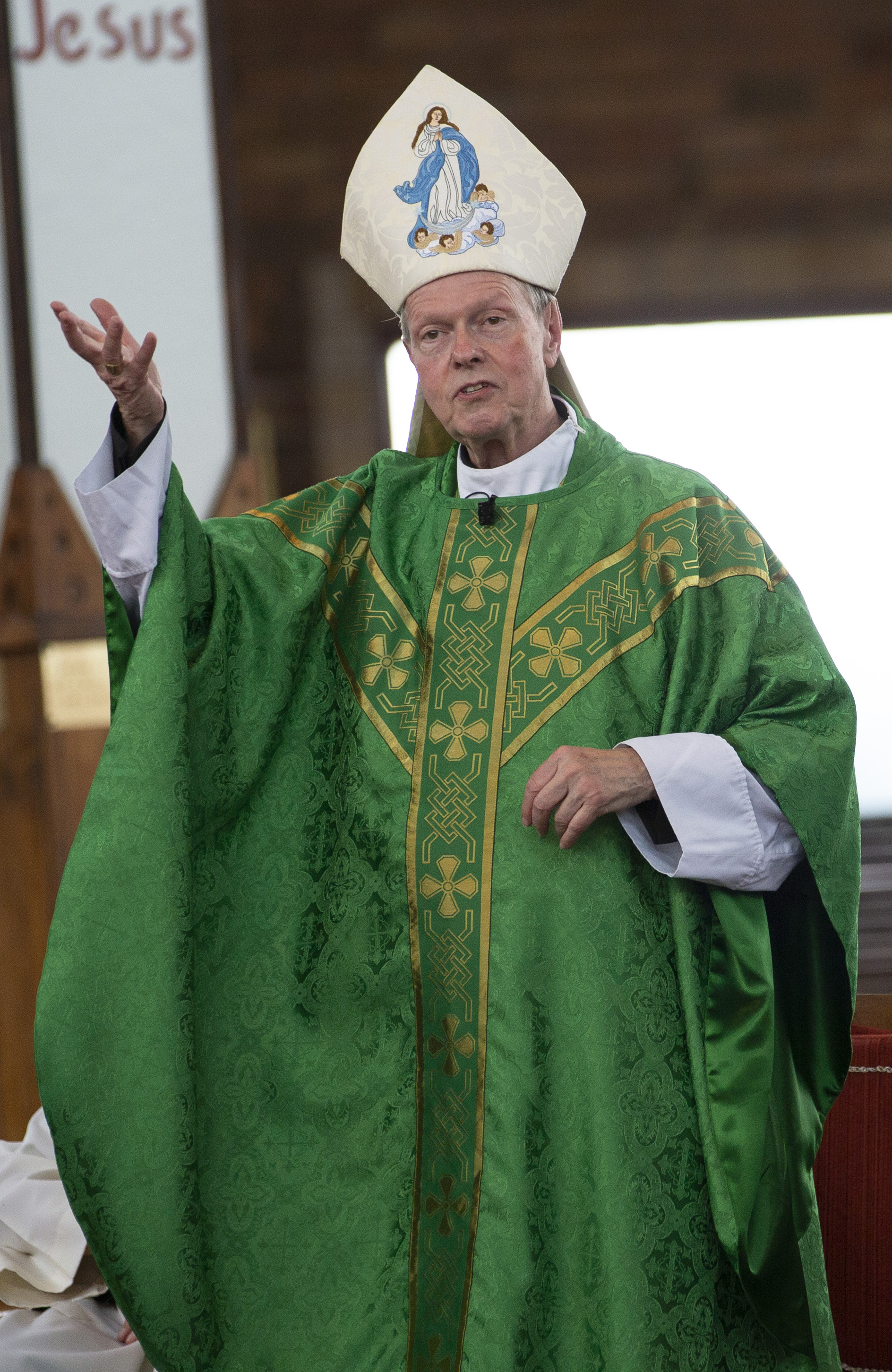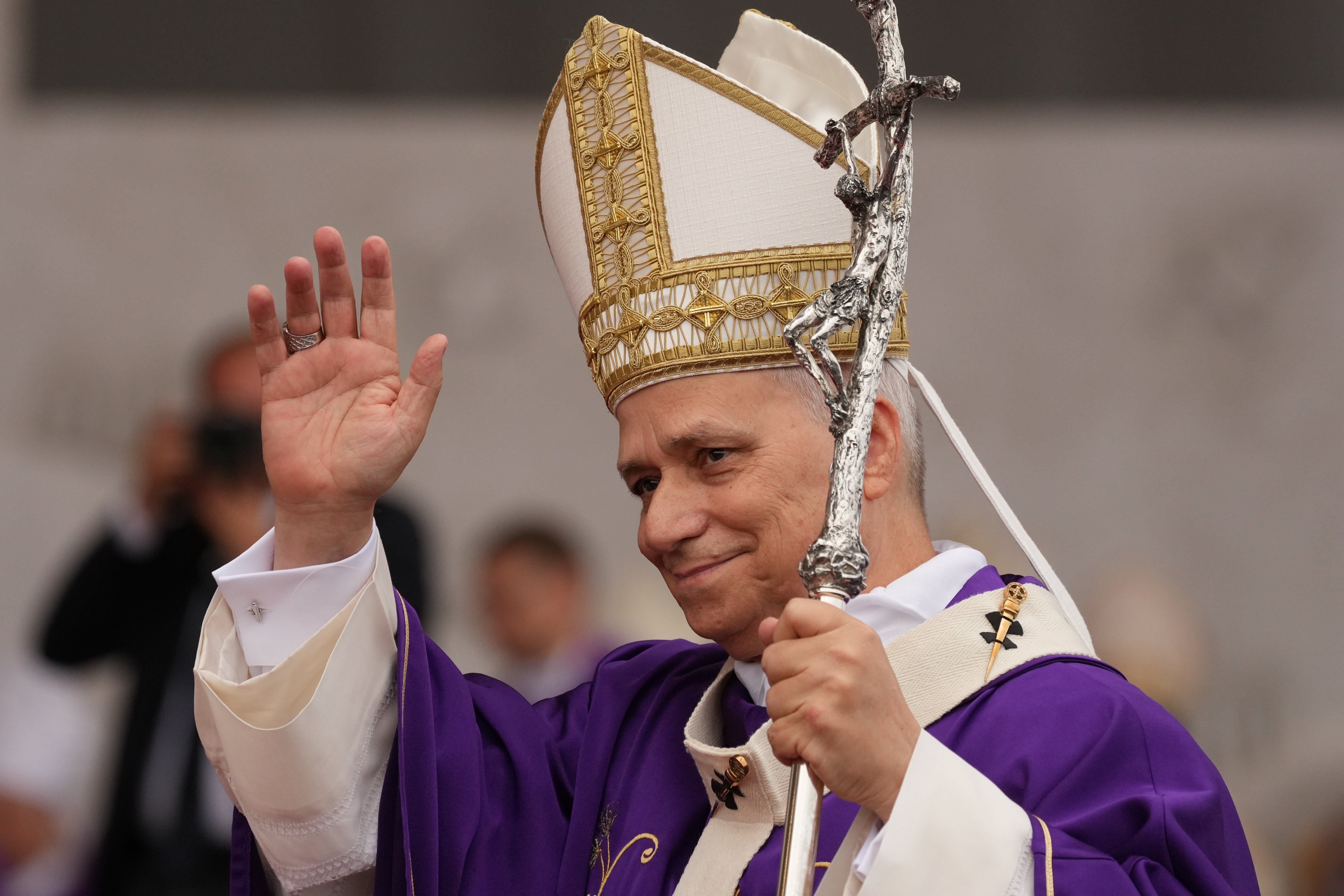February 22, 2022 at 9:51 p.m.
Some of us may have followed traditional practices of Lent that first year and, with fewer uncertainties last year, Ash Wednesday might have been a safe enough option as well. But some churches were only sprinkling ashes, not touching foreheads. Too dangerous to remind one another of the reality of mortality, even by a simple sacramental touch!
We could still fast that day and on Good Friday, as is the minimal prescription. In times past, Catholics between the ages of 21 and 59 also fasted every day during Lent and right through Holy Saturday. One main meal and two light meatless meals was not easy. During Lent we return to the prescribed practice of meatless Fridays — as every Friday once was, prior to 1965. In that year, Pope St. Paul VI, in his encyclical Paenitemini (“Let Us Repent”), while removing the mandatory nature of the traditional practices, deepened and broadened the options, encouraging many other practices during Lent, which might sharpen our real focus.
As always, our spiritual life flourishes most when we are centered not on ourselves and what we are doing, but on God and, specifically, what Jesus as our Savior is doing in our lives. Lent is a journey, a pilgrimage of 40 days, which leads up to the events at the end of the life of Christ, and the beginning of our deliverance from the death of sin, to the promise of Eternal Life, his death and resurrection.
To help us maintain this focus, various forms of physical and mental mortification have long been practiced. Our appreciation of a good meal is always best when we are hungry. The joy of reuniting with friends seems even more complete when we have experienced periods of absence. Physical training, and the discipline and sacrifice that accompany it, always makes for superior athletic performance. There is most sense and wisdom in applying these patterns to our spiritual life. Prayer is best experienced in settings where we are not too sidetracked by noises and interruptions. That is one reason why people make spiritual retreats for a time, but every moment in prayer is a mini-retreat if we follow the same principles: turn off and tune out of the distractions and focus on listening to the Lord.
One of the simplest ways of praying is to close your eyes, imagine Jesus looking at you, and just repeat his name, “Jesus.” Affirm your focus by saying, “Lord Jesus I trust in you,” or ask his help, “Lord Jesus Christ, Son of the living God, have mercy on me a sinner.” Another very effective method is to slowly recite or think of the Psalm (46:10): “Be still and know that I am God.” Pause for a while, then drop one word at a time, backwards, and pausing again: “Be still and know that I am …” and so forth, until you end with “Be.” This can be done over a period of five or even 10 minutes, and you will be focused. Like starting a diet, the hardest part of praying is just the first few steps.
So prayer during Lent is a must, and fasting and abstinence can certainly help. Almsgiving is the other traditional practice that is encouraged during this period and it certainly makes good sense if our goal is to walk with Jesus along the path he chose: “He emptied himself and assumed the condition of a slave …” (cf. Phil. 2:7). If giving up chocolate, or wine, or dessert is your way of sacrificing — especially if you give what you might have spent to those in greater need — by all means, do it. The mere repetition of healthful patterns, physically and spiritually, can help us grow and stay well.
There is one Lenten practice, however, that I have not yet mentioned. It surpasses all others in its capacity to reaffirm and strengthen our human and spiritual identity, because it is so much more personal than any other practice. It is the one thing that assures us that we are walking with Jesus and receiving him into our lives. It does not require anything from us except that we show up.
I am talking about the Eucharist, the Holy Sacrifice of the Mass. It is the Sacrament that guarantees for us the personal presence of Jesus Christ, for he identifies fully with this action, putting himself and his entire salvific action into it. The Mass is Calvary, re-presented in the form of a meal, not just a symbol or a memorial, but the real presence of Jesus himself, dead and risen.
Unlike the other practices of Lent, the Mass is more than an action that we do alone. All of them may involve some self-extension, some relationship with others, but the Mass is inherently social. By that I mean, it is always an act of communion, not just the reception of “Holy Communion” as we do, but a gathering of the members of the Body of Christ IN communion, a celebration of who we are as baptized Catholics, united in Christ. It is not only an expression of what we believe but of what we really are.
What I would invite every Catholic to do for Lent is to make attendance at Mass a practice, daily if possible, to really make it “a Lent like none other.” It is an invitation to respond to what Jesus himself asks the Apostles at the Last Supper: “do this in memory of me.” He thirsts for our souls and he wants to feed us with himself.
Neither Jesus nor church norms say when or how often, besides what our tradition to assist at Mass on Sundays and Holy Days has always prescribed. This is the mere minimum of observing the Lord’s command to keep holy the Sabbath. If, however, there is an opportunity to do this more often, even daily if circumstances permit, then what an excellent way to draw close to our Lord and one another.
Nothing brings us closer to Jesus than the Holy Sacrifice of the Mass. No Lenten practice brings us into a more intimate relationship with our Savior than to receive him into our hearts as the spiritual food that sustains us. If it has been some time since we have confessed, then a great way to begin Lent is to make that confession right at the start, or as soon as possible. Nothing draws forth the mercy of God than a good confession: “A humble and contrite heart, Oh Lord, you will not spurn” (cf. Ps. 15:17) To make a good Lent, keep it simple. Try the tried and true.
facebook.com/AlbanyBishopEd
@AlbBishopEd
SOCIAL MEDIA
OSV NEWS
- Puerto Rico’s Catholic governor signs historic ‘personhood’ law for the unborn
- Wisconsin man’s Catholic faith revived after finding bishop’s crosier in scrapyard
- ‘Knives Out’ discovers the strange, attractive light of the Christian story
- Why is New Year’s Day a holy day of obligation?
- India: Christmas celebrations disturbed or canceled over Hindu nationalist violence
- Vatican says close to 3 million people saw Pope Leo at the Vatican in 2025
- Vatican agency says 17 churchworkers murdered in 2025
- Czech archdiocese welcomes pioneering ‘3D church’
- A steady light: Pope Leo XIV’s top five moments of 2025
- US bishops underscore virtue of hope as 2025 Jubilee Year closes in dioceses








Comments:
You must login to comment.